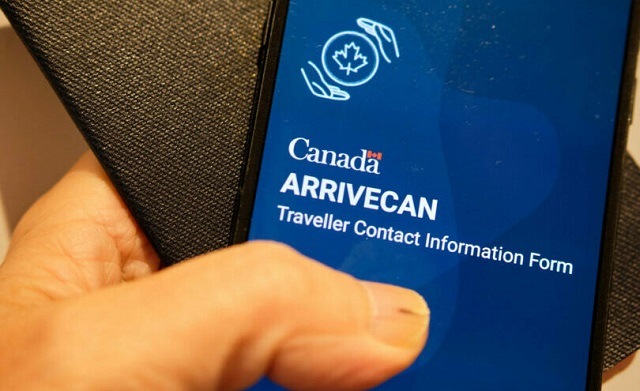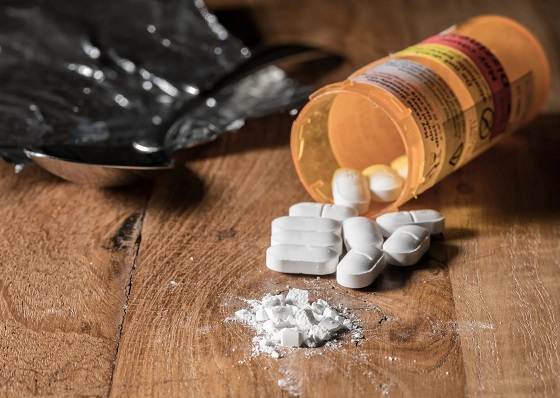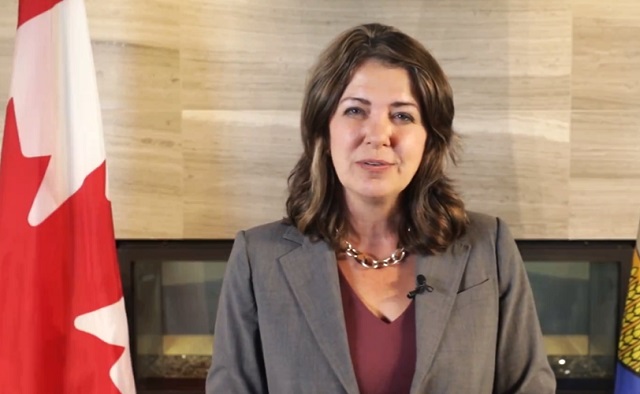Brownstone Institute
A World on Fire

BY
Every day, news reporters, traders, and workers of all sorts the world over wake to do their work as they always have. Part of that requires that everyone pretend that life is normal, fixable, and more or less stable. All of this is temporary. It will come and go and really not be that bad.
Strange, isn’t it? Human beings have a hard time adjusting to disaster, in their decision-making and even in their mindset. Reporters have to do their jobs as they are trained. Traders too. Everyone does. They please their bosses. They don’t sound alarms. They don’t scream and yell as they probably should.
But there is a moment in the day when the work is done and perhaps a cocktail comes out or the dishes are washed and the kids are in bed and the room falls silent. At this moment, millions and billions of people the world over know it. Disaster is all around us. We are just pretending otherwise, simply because this is what we have to do.
It was this way during lockdowns. They must know what they are doing otherwise why would we be forced to do this. If we all do our part, maybe this will end sooner rather than later. The experts surely know better than we do what is what. What can we do but trust?
Let us adjust and find a way to normalize all of this in our minds. We are powerless to change it in any case.
And thus the peoples of the world adjusted and will continue to do so as the fundamentals decay and rot, long past the end of lockdowns and most vaccine mandates, even as all the old rituals and signals of life as we once knew it fade further into memory.
Enough with the dreary existentialism. Let’s talk about life in a one-bedroom apartment in London. The price of energy for heat has nearly doubled, seemingly overnight. Truly, it took months but it has felt like one day to the next. The energy bills will be approaching a substantial portion of the rent itself. And the forecast — which one has to do because that’s how energy markets work on the consumer end — is showing a doubling and doubling again.
Here is what Goldman Sachs is seeing.

Small businesses cannot function under these conditions. “Tom Kerridge, the celebrity chef, revealed that the annual energy bill at his pub has soared from £60,000 to £420,000 and warned that ‘ludicrous’ price rises left the hospitality sector facing a ‘terrifying landscape’,” reports Telegraph.
This is all running wildly ahead of consumer prices generally. This is only through June. We are already approaching 100% inflation in energy.

Many will need to close up shop. The new Prime Minister Liz Truss, who calls herself a conservative, has capped price increases for consumers while pushing the largest spending bill to bail out energy companies ever. It truly seems like she had no choice. Yes, that’s what they all say, but in this case, it might be true simply because otherwise, the entire nation would totally fall apart.
It could happen anyway.
“The U.K. may be facing a wave of business bankruptcies exceeding anything witnessed during the post-2008 panic and recession,” reports Joseph Sternberg. “Some 100,000 firms could be forced into insolvency in coming months, bankruptcy consultancy Red Flag Alert warned this week. These are otherwise healthy firms with at least £1 million in annual revenue. Business failures on this scale would dwarf the roughly 65,000 firms of any size that went under from 2008-10.”
Everyone wants to know why. As always, there are a number of factors. The sanctions on Russia for its struggle over the borders of Ukraine were ill-advised. That has never stopped the deployment of such tactics: sanctions against Cuba still in force began 60 years ago, all in an effort to make some foreign state behave in a way that the US demands.
They have driven up the price of energy all over Europe and the UK. But even then, Russian sources only about 3% of the UK’s energy needs.
Another culprit is the fanatical attempt on the part of the government to convert a fossil-fuel economy to one powered by the wind and sun. For reasons of climate change, we know how good politicians are at controlling the global climate by taking away your consumer conveniences.
But really even these two factors would not be enough to cause this level of carnage. The real root of the problem is monetary, which in turn traces (again!) to lockdown policies: the wild currency debasement starting March 2020 and continuing through lockdowns has wrecked the place. How could they not see this coming? It’s ridiculous.
And it happened the world over. The chart below that I put together looks messy but it tells the whole story of how one generation of central bankers wrecked the world. The key on the left tells you monetary inflation rates and the key on the right tells you price inflation rates. One lags the other by 16-18 months. I’ve color-coded it so that you can see the relationships.
This covers the U.S. (green), the EU (red), and the UK (blue). You can see the massive oceans of paper being pumped out to cover up for the egregious evil of lockdowns. Do you remember those days when governments the world over imagined that they could somehow shut things down while keeping the data looking pretty with the printing press?

How Quickly Things Fall Apart
My friends in the UK are truly panicked. They want to come to the U.S. just to get away. But many of my friends are rebels and did not accept the vaccine because they are healthy and under the age of 80. They rejected the jab. Now they cannot come to the U.S. because the U.S. is still imposing rules that forbid travelers from foreign countries who are not vaccinated from getting across the borders.
These policies again trace to the lockdown era: March 12, 2020, in particular, when the office of the president decided on its own to do the unthinkable and shut travel from Europe, UK, Australia, and New Zealand. It caused family disruption, business loss, and tragedy all around. It is still not normalized, which makes the point: no one in Washington has any regrets.
This is the essence of policy in America today. Truly people are being locked out of our country for being insufficiently loyal to Pfizer, which seems to be the real government here at home, at least as it pertains to public health.
The most striking feature of that which afflicts the UK today is the sheer speed of it all. One day life was normal and then suddenly the bills were through the roof. No one could explain why. It was some kind of mystery, and extremely disorienting.
Why energy, for example? Well, inflation strikes in strange ways. It gravitates to the thing most vulnerable to price hikes. This could be dictated by fashion or policy or both. But when it happens, no power can stop it.
The story of going from normal to double and triple prices, forecasting to go much higher, reminds me of books I’ve read about Weimar, how things were fine until suddenly they were not and life itself took a shocking turn.
Until recently, Americans have looked at the chaos abroad and thought oh that’s what these weird foreign people do, just strange stuff with unstable governments and unsound financial systems. And yet right now it is happening to our mirror country across the pond, a place that Americans think of as cousins with a Royal family.
The remarkable thing is that the UK’s monetary policy was not as bad as the U.S.’s own. The only difference is that there is a larger international market for dollars than for pounds. This allows the Fed a bit of breaking room to do more damage.
But can it happen here? Yes, certainly, and it could happen before year’s end. The policies of the last three years have created an incredible powder keg. No one knows when it will go off, and no one knows what to do when it happens.
There are so many other data points: missing workers, food shortages, political instability, and the breathtaking entrenchment of Xi-backed lockdowns in China.
The world is on fire. Most people are not willing to think about it or talk about it. Yet.
Brownstone Institute
The Media Refuses to Accept Covid Reality

From the Brownstone Institute
By
By late 2020, the media and public health establishment had two obsessions. One of their obsessions involved forcing the public to wear masks, even though the mountains of data and several studies had already confirmed that they don’t stop the transmission of respiratory viruses. The second obsession was forcing everyone to take Covid vaccines, regardless of their actual efficacy, risk of side effects, age or underlying health, or the vaccines’ rapidly waning efficacy.
Neither of those obsessions has abated, though even the most extreme, hardened Covid extremists have acknowledged that the vaccines were flawed, mandates were a mistake, and side effects should be acknowledged.
The media, unwilling to give up on the increased power, influence, and moral judgment it gained during the pandemic, has refused to accept that it effectively ended years ago.
So it’s no surprise that media outlets have noticed that, as we’ve seen every single summer since 2020, cases have increased, predominantly across the Western and Southern United States. Thankfully though, Los Angeles media, of course it had to be Los Angeles, has determined the culprit.
The Media Refuses to Accept Covid Reality
Turns out it’s not seasonality causing the increase, it’s outdated Covid vaccines and a lack of public masking, of course!
NBC Los Angeles “reported” that Covid cases in California and Los Angeles have “doubled” in the last month. This sounds horrifying and scary, doesn’t it? Yet it again, as is so often the case with Covid coverage, is misleading.
Let’s take a look at the current daily average of new cases in Los Angeles County:
Cases are so low they’re functionally indistinguishable from zero.
You can see why the media is scared, given how dramatic this surge appears to be compared to those in the previous four years. And thanks to NBC’s crack reporting and expert analysis, we know why this terrifying increase is happening. Spoiler alert: it’s all your fault that you haven’t controlled an uncontrollable respiratory virus with individual behavior that has no impact whatsoever on the spread of the coronavirus.
“People aren’t necessarily wearing masks; they’re not required to in certain places,” nurse practitioner Alice Benjamin, referenced as an expert by NBA LA said. “We’re traveling, we’re getting out for the summer. We also do have some reduced immunity. The vaccines will wane over time.”
Nowhere in the story is it mentioned that the massive jump in Covid cases in late 2021 and early 2022 happened immediately after LA County Public Health issued a press release celebrating the county for achieving 95+ percent masking rates at indoor businesses. No one seems willing or able to ask this nurse practitioner why she believes wearing masks would reduce this “surge,” if it failed so spectacularly in previous surges.
Endless Misinformation from ‘Experts’
She wasn’t done with the misinformation though. Benjamin warned that not enough Angelenos are getting the “updated” vaccine, which explains the summer increase.
“If you got it in October and later, that’s generally the updated vaccine,” Benjamin said. “If you got it prior to October, double check because if you did get the bivalent which has not been phased out, we recommend you do get an updated vaccine.”
And according to her, everyone should get it. Because the CDC said so.
“Per CDC recommendations, anyone 6 months or older should have at least one of the updated Covid vaccines,” Benjamin said.
Though, of course, no one on the crack NBC Los Angeles team thought to ask Benjamin why the “updated” October vaccine would help against the now common FLiRT variant when it emerged six months after the “updated” vaccine was released. Especially when the “study” process for booster doses is effectively nonexistent anyway. Pfizer and Moderna churn out a “targeted” dose that is supposed to protect against a variant that’s no longer circulating, never has to show any real-world benefit, and the regulatory agencies sign off on it, while the CDC recommends everyone get it.
Rinse, repeat.
Nor did anyone ask her what possible rationale there could be for forcing six-month-old babies to get vaccinated with a booster that has no studied efficacy against the currently circulating variant.
Her comments and the media reaction exemplify the problems with Covid discourse that started in 2020 and will apparently continue forever. A complete and purposeful ignorance of the facts, the data, and the evidence base. A willingness to advocate for the same sort of restrictions and interventions that have already failed. Ignorance of the booster process and endless appeals to public health authorities. Even though those authorities have made countless mistakes and refused to update their findings after being proven wrong.
The obvious question is: How does this type of absurdist discourse ever end? The answer, as we continue to see, is it doesn’t.
Republished from the author’s Substack
Brownstone Institute
The Pandemic Excuse for a Corporatist Coup

From the Brownstone Institute
We’ve just come across a document hosted by the Department of Homeland Security, posted March 2023, but written in 2007, that amounts to a full-blown corporatist imposition on the US, abolishing anything remotely resembling the Bill of Rights and Constitutional law. It is right there in plain sight for anyone curious enough to dig.
There is nothing in it that you haven’t already experienced with lockdowns. What makes it interesting are the participants in the forging of the plan, which is pretty much the whole of corporate America as it stood in 2007. It was a George W. Bush initiative. The conclusions are startling.
“Quarantine is a legally enforceable declaration that a government body may institute over individuals potentially exposed to a disease, but who are not symptomatic. If enacted, Federal quarantine laws will be coordinated between CDC and State and local public health officials, and, if necessary, law enforcement personnel…The government may also enact travel restrictions to limit the movement of people and products between geographic areas in an effort to limit disease transmission and spread. Authorities are currently reviewing possible plans to curtail international travel upon a pandemic’s emergence overseas.
“Limiting public assembly opportunities also helps limit the spread of disease. Concert halls, movie theaters, sports arenas, shopping malls, and other large public gathering places might close indefinitely during a pandemic—whether because of voluntary closures or government-imposed closures. Similarly, officials may close schools and non-essential businesses during pandemic waves in an effort to significantly slow disease transmission rates. These strategies aim to prevent the close interaction of individuals, the primary conduit of spreading the influenza virus. Even taking steps such as limiting person-to-person interactions within a distance of three feet or avoiding instances of casual close contact, such as shaking hands, will help limit disease spread.”
There we have it: the pandemic plans. They once seemed abstract. In 2020, they became very real. Your rights were deleted. No more freedom even to have house guests. In those days, the rule was to enforce only three feet of distance rather than six feet of distance, neither of which had any basis in science. Indeed, the actual scientific literature even at that time recommended against any physical interventions designed to limit the spread of respiratory viruses. They were known not to work. The entire profession of public health accepted that.
Therefore, for many years before lockdowns wrecked economic functioning, there had been two parallel tracks in operation, one intellectual/academic and one imposed by state/corporate managers. They had nothing to do with each other. This situation persisted for the better part of 15 years. Suddenly in 2020, there was a reckoning, and the state/corporate managers won it. Seemingly out of nowhere, liberty as we have long known it was gone.
Back in 2005, I first came across a Bush administration scheme, an early draft of the above, that would have ended freedom as we know it. It was a scheme for combating the bird flu, which officials back then imagined would involve universal quarantines, business and event closures, travel restrictions, and more.
I wrote: “Even if the flu does come, and taxpayers have coughed up, the government will surely have a ball imposing travel restrictions, shutting down schools and businesses, quarantining cities, and banning public gatherings…It is a serious matter when the government purports to plan to abolish all liberty and nationalize all economic life and put every business under the control of the military, especially in the name of a bug that seems largely restricted to the bird population. Perhaps we should pay more attention. Perhaps such plans for the total state ought to even ruffle our feathers a bit.”
For years I wrote about this topic, trying to get others interested. It was all there in black and white. At the drop of a hat, under the guise of a pandemic that only state managers can declare, real or drummed up, freedom itself could be abolished. These plans were never legislated, debated, or publicly discussed. They were simply posted as the result of various consultations with experts, who worked out their totalitarian fantasies as if scripting a Hollywood film.
The 2007 blueprint is more explicit than anything I’ve seen. It comes from the National Infrastructure Advisory Council, which “includes executive leaders from the private sector and state/local government who advise the White House on how to reduce physical and cyber risks and improve the security and resilience of the nation’s critical infrastructure sectors. The NIAC is administered on behalf of the President in accordance with the Federal Advisory Committee Act under the authority of the Secretary of the US Department of Homeland Security.”
And who sat on this committee in 2007 that decided that governments “may close schools and non-essential businesses”? Let us see.
- Mr. Edmund G. Archuleta, General Manager, El Paso Water Utilities
- Mr. Alfred R. Berkeley III, Chairman and CEO, Pipeline Trading Group, LLC, and former President and Vice Chairman of NASDAQ
- Chief Rebecca F. Denlinger, Fire Chief, Cobb County (Ga.) Fire and Emergency Services
- Chief Gilbert G. Gallegos, Police Chief (ret.), City of Albuquerque, N.M. Police Department
- Ms. Martha H. Marsh, President and CEO, Stanford Hospital and Clinics
- Mr. James B. Nicholson, President and CEO, PVS Chemical, Inc.
- Mr. Erle A. Nye, Chairman Emeritus, TXU Corp., NIAC Chairman
- Mr. Bruce A. Rohde, Chairman and CEO Emeritus, ConAgra Foods, Inc.
- Mr. John W. Thompson, Chairman and CEO, Symantec Corporation
- Mr. Brent Baglien, ConAgra Foods, Inc.
- Mr. David Barron, Bell South
- Mr. Dan Bart, TIA
- Mr. Scott Blanchette, Healthways
- Ms. Donna Burns, Georgia Emergency Management Agency
- Mr. Rob Clyde, Symantec Corporation
- Mr. Scott Culp, Microsoft
- Mr. Clay Detlefsen, International Dairy Foods Association
- Mr. Dave Engaldo, The Options Clearing Corporation
- Ms. Courtenay Enright, Symantec Corporation
- Mr. Gary Gardner, American Gas Association
- Mr. Bob Garfield, American Frozen Foods Institute
- Ms. Joan Gehrke, PVS Chemical, Inc.
- Ms. Sarah Gordon, Symantec
- Mr. Mike Hickey, Verizon
- Mr. Ron Hicks, Anadarko Petroleum Corporation
- Mr. George Hender, The Options Clearing Corporation
- Mr. James Hunter, City of Albuquerque, NM Emergency Management
- Mr. Stan Johnson, North American Electric Reliability Council (NERC)
- Mr. David Jones, El Paso Corporation
- Inspector Jay Kopstein, Operations Division, New York City Police Department (NYPD)
- Ms. Tiffany Jones, Symantec Corporation
- Mr. Bruce Larson, American Water
- Mr. Charlie Lathram, Business Executives for National Security (BENS)/BellSouth
- Mr. Turner Madden, Madden & Patton
- Chief Mary Beth Michos, Prince William County (Va.) Fire and Rescue
- Mr. Bill Muston, TXU Corp.
- Mr. Vijay Nilekani, Nuclear Energy Institute
- Mr. Phil Reitinger, Microsoft
- Mr. Rob Rolfsen, Cisco Systems, Inc.
- Mr. Tim Roxey, Constellation
- Ms. Charyl Sarber, Symantec
- Mr. Lyman Shaffer, Pacific Gas and Electric,
- Ms. Diane VanDeHei, Association of Metropolitan Water Agencies (AMWA)
- Ms. Susan Vismor, Mellon Financial Corporation
- Mr. Ken Watson, Cisco Systems, Inc.
- Mr. Greg Wells, Southwest Airlines
- Mr. Gino Zucca, Cisco Systems, Inc.
- Department of Health and Human Services (HHS) Resources
- Dr. Bruce Gellin, Rockefeller Foundation
- Dr. Mary Mazanec
- Dr. Stuart Nightingale, CDC
- Ms. Julie Schafer
- Dr. Ben Schwartz, CDC
- Department of Homeland Security (DHS) Resources
- Mr. James Caverly, Director, Infrastructure Partnerships Division
- Ms. Nancy Wong, NIAC Designated Federal Officer (DFO)
- Ms. Jenny Menna, NIAC Designated Federal Officer (DFO)
- Dr. Til Jolly
- Mr. Jon MacLaren
- Ms. Laverne Madison
- Ms. Kathie McCracken
- Mr. Bucky Owens
- Mr. Dale Brown, Contractor
- Mr. John Dragseth, IP attorney, Contractor
- Mr. Jeff Green, Contractor
- Mr. Tim McCabe, Contractor
- Mr. William B. Anderson, ITS America
- Mr. Michael Arceneaux, Association of Metropolitan Water Agencies (AMWA)
- Mr. Chad Callaghan, Marriott Corporation
- Mr. Ted Cromwell, American Chemistry Council (ACC)
- Ms. Jeanne Dumas, American Trucking Association (ATA)
- Ms. Joan Harris, US Department of Transportation, Office of the Secretary
- Mr. Greg Hull, American Public Transportation Association
- Mr. Joe LaRocca, National Retail Federation
- Mr. Jack McKlveen, United Parcel Service (UPS)
- Ms. Beth Montgomery, Wal-Mart
- Dr. J. Patrick O’Neal, Georgia Office of EMS/Trauma/EP
- Mr. Roger Platt, The Real Estate Roundtable
- Mr. Martin Rojas, American Trucking Association (ATA)
- Mr. Timothy Sargent, Senior Chief, Economic Analysis and Forecasting Division, Economic and Fiscal Policy Branch, Finance Canada
In other words, big everything: food, energy, retail, computers, water, and you name it. It’s a corporatist dream team.
Consider ConAgra itself. What is that? It is Banquet, Chef Boyardee, Healthy Choice, Orville Redenbacher’s, Reddi-Wip, Slim Jim, Hunt’s Peter Pan Egg Beaters, Hebrew National, Marie Callender’s, P.F. Chang’s, Ranch Style Beans, Ro*Tel, Wolf Brand Chili, Angie’s, Duke’s, Gardein, Frontera, Bertolli, among many other seemingly independent brands that are all actually one company.
Now, ask yourself: why might all these companies favor a plan for lockdowns? Why might WalMart, for example? It stands to reason. Lockdowns are a massive interference with competitive capitalism. They provide the best possible subsidy to big business while shutting down independent small businesses and putting them at a huge disadvantage once the opening up happens.
In other words, it is an industrial racket, very much akin to interwar-style fascism, a corporatist combination of big business and big government. Throw pharma into the mix and you see exactly what came to pass in 2020, which amounted to the largest transfer of wealth from small and medium-sized business plus the middle class to wealthy industrialists in the history of humanity.
The document is open even about managing information flows: “The public and private sectors should align their communications, exercises, investments, and support activities absolutely with both the plan and priorities during a pandemic influenza event. Continue data gathering, analysis, reporting, and open review.”
There is nothing in any of this that fits with any Western tradition of law and liberty. Nothing. It was never approved by any democratic means. It was never part of any political campaign. It has never been the subject of any serious media examination. No think tank has ever pushed back on such plans in any systematic way.
The last serious attempt to debunk this whole apparatus was from D.H. Henderson in 2006. His two co-authors on that paper eventually came around to going along with lockdowns of 2020. Henderson died in 2016. One of the co-authors of the original article told me that if Dr. Henderson had been around, instead of Dr. Fauci, the lockdowns would never have taken place.
Here we are four years following the deployment of this lockdown machinery, and we are witness to what it destroys. It would be nice to say that the entire apparatus and theory behind it have been fully discredited.
But that is not correct. All the plans are still in place. There have been no changes in federal law. Not one effort has been made to dismantle the corporatist/biosecurity planning state that made all this possible. Every bit of it is in place for the next go-around.
Much of the authority for this whole coup traces to the Public Health Services Act of 1944, which was passed in wartime. For the first time in US history, it gave the federal government the power to quarantine. Even when the Biden administration was looking for some basis to justify its transportation mask mandate, it fell back to this one piece of legislation.
If anyone really wants to get to the root of this problem, there are decisive steps that need to be taken. The indemnification of pharma from liability for harm needs to be repealed. The court precedent of forced shots in Jacobson needs to be overthrown. But even more fundamentally, the quarantine power itself has to go, and that means the full repeal of the Public Health Services Act of 1944. That is the root of the problem. Freedom will not be safe until it is uprooted.
As it stands right now, everything that unfolded in 2020 and 2021 can happen again. Indeed, the plans are in place for exactly that.
-

 Brownstone Institute1 day ago
Brownstone Institute1 day agoThe Media Refuses to Accept Covid Reality
-

 Alberta1 day ago
Alberta1 day ago‘Fireworks’ As Defence Opens Case In Coutts Two Trial
-
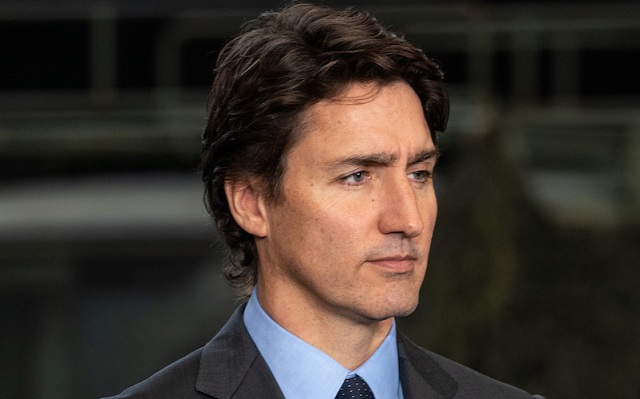
 National1 day ago
National1 day agoLiberals offer no response as Conservative MP calls Trudeau a ‘liar’ for an hour straight
-
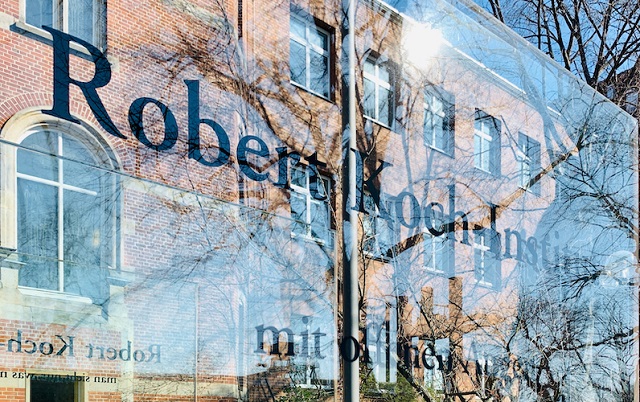
 COVID-191 day ago
COVID-191 day agoLeaked documents: German gov’t lied about shots preventing COVID, knew lockdowns did more harm than good
-

 Business1 day ago
Business1 day agoFederal government seems committed to killing investment in Canada
-

 International1 day ago
International1 day agoSwitzerland’s new portable suicide ‘pod’ set to claim its first life ‘soon’
-

 Business1 day ago
Business1 day agoEstonia’s solution to Canada’s stagnating economic growth
-
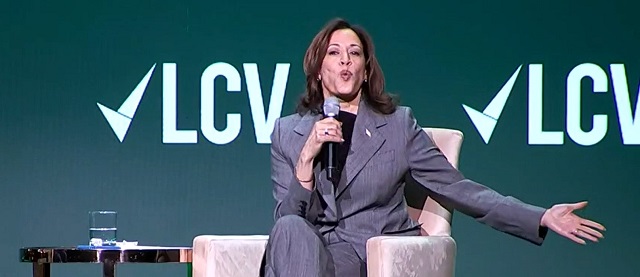
 Economy1 day ago
Economy1 day agoKamala Harris’ Energy Policy Catalog Is Full Of Whoppers




